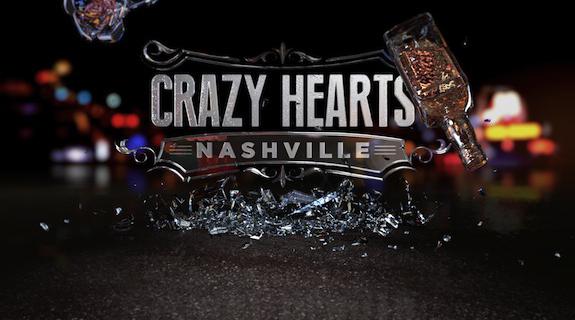A&E’s “Crazy Hearts: Nashville” is a show that follows the intertwining tales of a group of musicians and music industry insiders, which means there’s plenty of sordid drama to go around. Or, as Matt Hall, creative director for BIGSMACK, put it, “Everyone’s sleeping with each other and going out drinking. It’s a bit of a train wreck.”
Therein lies the fun of course, so when BIGSMACK got the chance to create a show open for “Crazy Hearts,” the agency took that wreckage concept and ran it right into the ground. Literally.
Inspired by the less-is-more approach of old RGA titles (such as the slim yet sinister opening to the film “Alien”), Bigsmack selected three basic objects that Hall described as: “icons for the core themes of the show”: a guitar, a rose and a bottle of bourbon. In the spot, these items are launched into the air, the Nashville skyline at night twinkling in the background… and down they smash to the ground into thousands of pieces. Cue title bumper and a rousing lick from LeAnn Rimes’ “Gasoline and Matches” and boom, done. Start the show.
All in all, the open is about 12 seconds of beautifully wrought smashing, and through that simple action it metaphorically communicates everything a viewer needs to know: the destructive power of the music industry; the destructive power of love; the destructive power of alcohol; what goes up must come down.
Bigsmack’s original plan for the spot involved shooting it live action, which would have entailed making actual glass molds of the objects, actually throwing them up in the air, and actually following their arc to the ground using a Phantom camera at 1200 frames per second. It would have been gorgeous, and “the cost of the props would have been astronomical,” said Hall. “The guitar was going to be a total nightmare. The rose would have been a pain in the ass, too… We kind of scrambled and circled the wagon and came up with a method of doing it in 3D and still get across a lot of that photographic quality.”
That method involved extensive usage of two invaluable computer graphics tools. The first was the software RealFlow and its “hardbody dynamics, fracturing and fluid simulations.” What that means to a CG layperson is the ability to do “really complex animations relatively easily,” said Rick Malwitz, graphic designer at Bigsmack. After modeling the objects in 3D, Malwitz said that “The hard part was fracturing the glass. It’s thousands of pieces shattered. RealFlow was able to do it in a matter of minutes, which would have taken a very, very long time by hand. That gave us the ability to experiment with how the glass was fractured and would animate as it hit the ground. We did 50 to 100 different simulations to get the look that we went with.”
Once the 3D motion was set, the second extremely useful tool came into play: a new “physically-based” renderer aptly titled Octane Render. Using numerical calculations and its own powerful Graphics Processing Unit (GPU) – a system typically reserved for the fluid graphics found in 3D gaming – Octane follows the physical behavior of light as closely as possible in an effort to predict what the final appearance of a design will be. The result is photorealistic rendering of graphics that also happens to be lightning fast.
“To give you an idea,” Hall said, “all of the 18 machines in our office would take all night to render one pass through [“Crazy Hearts’”] open. Once we hopped over to Octane, we were able to get that whole pass done on one machine, in one night. And the quality was actually better.”
Not only that, Hall said, but Octane is “a progressive renderer, so it shows you what your final frame is going to look like [before you actually render it]. The longer you let it process, the cleaner that image gets, [but] you can get almost finished-looking feedback almost immediately from your scene, and you don’t even have to render it.”
Bigsmack’s open for “Nashville: Crazy Hearts” may be short, but it packs a wallop, and is the sign of a rapidly moving transition in motion graphics. As programs like Octane make rendering times less and less, CG artists are getting closer and closer to creating and processing fully realized photorealistic graphics in real time. Once a 3D piece of glass can be made “real” as easily as drawing a picture in MS Paint, a lot more than just a bottle, a rose and a guitar is going to come crashing down.
Tags:













































__twocolumncontent.jpg)











